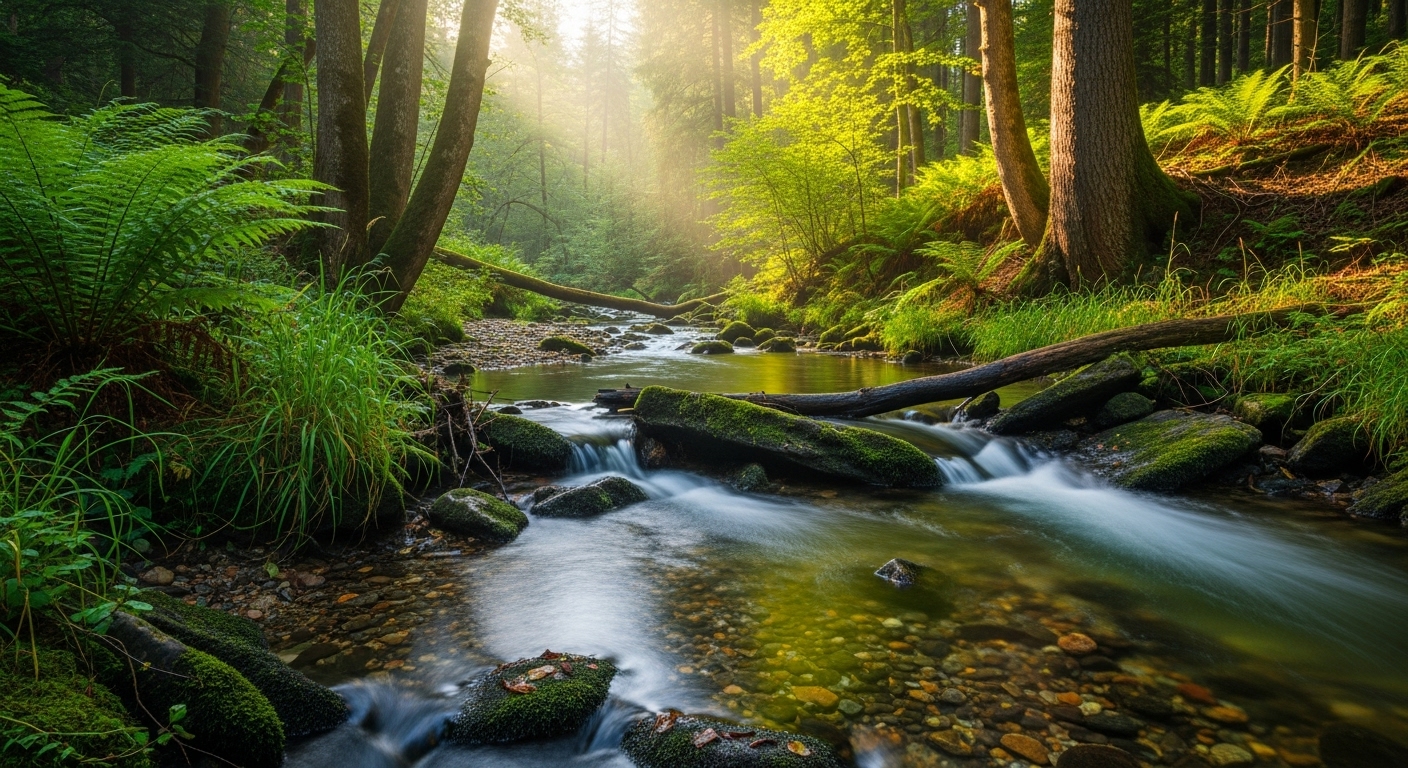The Ruisseau d’Avenelle is a picturesque stream that captivates visitors with its calm waters, lush surroundings, and ecological importance. Flowing gently through the countryside, this small watercourse is a perfect representation of how nature and heritage coexist in harmony. The Ruisseau d’Avenelle is not only a geographical feature but also a symbol of environmental balance, attracting nature enthusiasts, photographers, and historians alike.
This stream is known for its clear waters, diverse wildlife, and peaceful landscapes, making it a remarkable destination for anyone who values the serenity of untouched nature.
Geographical Overview of Ruisseau d’Avenelle
The Ruisseau d’Avenelle flows through a scenic region characterized by green meadows, dense forests, and charming rural settlements. It stretches for several kilometers, feeding into larger rivers and contributing to the area’s freshwater ecosystem.
| Feature | Description |
|---|---|
| Type | Natural Stream |
| Region | Central Europe (exact locality may vary) |
| Water Source | Springs and rainfall from nearby hills |
| Ecosystem | Freshwater with moderate vegetation |
| Best Season to Visit | Spring to early autumn |
Its gentle flow supports both aquatic and terrestrial life, providing a natural habitat for fish, amphibians, and various plant species. The sound of flowing water, the chirping of birds, and the lush greenery surrounding it create an environment of perfect tranquility.
Historical Significance of Ruisseau d’Avenelle
The Ruisseau d’Avenelle has long been intertwined with local history. In earlier centuries, streams like this were vital for agriculture, providing irrigation and drinking water for nearby villages. Old stone bridges and remnants of mills near its banks still tell stories of the past.
In many European traditions, such streams were considered sacred spaces, associated with purity and renewal. The Ruisseau d’Avenelle continues to inspire poets, writers, and environmentalists who see in its flowing waters a metaphor for life’s continuity and resilience.
Ecological Importance of Ruisseau d’Avenelle
The Ruisseau d’Avenelle plays a vital ecological role. Its clean, slow-moving waters support a diverse range of flora and fauna. The banks are often lined with willow, alder, and wildflowers, creating habitats for insects and small mammals.
Aquatic life thrives here, with small fish species, frogs, and freshwater invertebrates forming an essential part of the ecosystem. The Ruisseau d’Avenelle acts as a natural filter, helping purify the surrounding environment by maintaining water circulation and reducing soil erosion.
Table: Common Species Found Around Ruisseau d’Avenelle
| Category | Examples |
|---|---|
| Aquatic Life | Minnows, Frogs, Small Crustaceans |
| Plants | Water Lilies, Mosses, Willow Trees |
| Birds | Kingfisher, Heron, Swallow |
| Insects | Dragonflies, Butterflies, Water Beetles |
Conservationists emphasize protecting streams like Ruisseau , as they form critical corridors for biodiversity and act as natural buffers against climate change impacts.
Cultural and Local Value of Ruisseau d’Avenelle
For local residents, the Ruisseau d’Avenelle is more than just a stream—it is a part of their cultural identity. It influences community traditions, local folklore, and even seasonal festivals. Many families enjoy walking along its paths, fishing, or simply relaxing by the water.
Local artists often paint or photograph the Ruisseau , capturing its seasonal transformations—from frozen beauty in winter to blooming life in spring. It also serves as a teaching ground for environmental education, where children learn about ecology and the importance of preserving freshwater ecosystems.
Tourism and Activities at Ruisseau d’Avenelle
Tourism at the Ruisseau is typically eco-friendly and low-impact. Visitors come here to reconnect with nature and enjoy peaceful outdoor experiences. Some popular activities include:
-
Nature Walks: Trails alongside the stream offer a serene hiking experience.
-
Birdwatching: The Ruisseau attracts bird species that are perfect for observation and photography.
-
Picnicking: The calm and shaded banks make for ideal picnic spots.
-
Photography: Each curve and reflection of the stream provides stunning natural compositions.
Local tourism authorities often encourage sustainable practices to ensure that the Ruisseau remains pristine for future generations.
Environmental Challenges and Conservation Efforts
Like many natural watercourses, the Ruisseau faces challenges from urban expansion, pollution, and climate change. Runoff from agriculture and deforestation in nearby areas can affect its water quality and biodiversity.
To counter these threats, environmental organizations and local communities have launched initiatives focused on:
-
Water quality monitoring
-
Habitat restoration
-
Reforestation along stream banks
-
Public awareness campaigns
These conservation measures have proven effective in maintaining the health of the Ruisseau and preserving it as a natural heritage site.
Best Time to Visit Ruisseau d’Avenelle
The Ruisseau offers different charms in every season. In spring, flowers bloom along its banks, and the sound of rushing water fills the air. During summer, it provides a cool escape from the heat. Autumn paints the landscape in gold and crimson hues, while winter transforms it into a silent, frosted wonderland.
| Season | Highlights |
|---|---|
| Spring | Wildflowers and fresh greenery |
| Summer | Cool breeze and clear reflections |
| Autumn | Colorful foliage and mild weather |
| Winter | Frozen beauty and calm atmosphere |
Why Ruisseau d’Avenelle Deserves Recognition
The Ruisseau d’Avenelle may not be widely known, but it embodies the essence of natural harmony. It reminds us that even the smallest streams play a significant role in maintaining ecological balance. Protecting such environments ensures clean water, thriving wildlife, and a peaceful retreat for humans.
For travelers seeking serenity, artists searching for inspiration, or ecologists studying freshwater systems, d’Avenelle stands as a timeless reminder of nature’s grace and resilience.
Conclusion
In an age where urbanization often overshadows natural beauty, the Ruisseau d’Avenelle remains a tranquil refuge for nature lovers. Its clear waters, historical echoes, and thriving ecosystem make it a destination worth cherishing and protecting.
By respecting and preserving the Ruisseau , we not only safeguard a vital environmental resource but also honor the delicate relationship between humanity and nature.

